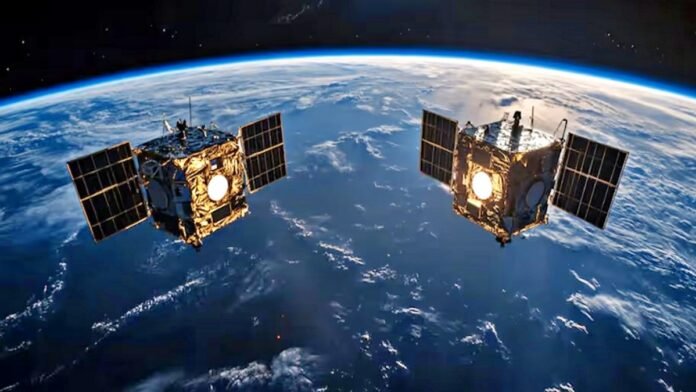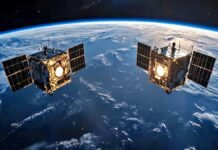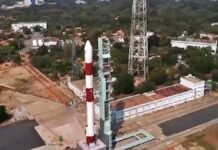
Key Points:
ISRO’s Space Docking Experiment (Spadex) satellites now just 3 meters apart in orbit.
Mission aims to demonstrate India’s space docking technology.
Previous distance was 1.5 kilometers, reduced progressively to 15 meters, now 3 meters.
Spadex project missed its ‘docking’ experiment deadlines on January 7 and 9.
Launched on December 30 via PSLV C60 from Sriharikota.
New Delhi: In a monumental step towards mastering space technology, the Indian Space Research Organisation (ISRO) has maneuvered two satellites in the Space Docking Experiment (Spadex) to within a breath-taking distance of just 3 meters. This significant reduction in distance from 15 meters to 3 meters marks a critical phase in the Spadex mission, which is set to showcase India’s prowess in space docking, a technology vital for future space endeavors.
The journey began last Friday when the satellites were still 1.5 kilometers apart. ISRO had then announced on ‘X’, “All sensors are being evaluated. The condition of the spacecraft is normal,” but refrained from specifying a docking date. This cautious approach was due to previous missed deadlines for the docking experiments planned for January 7 and 9.
The Spadex mission, launched on December 30, was carried into orbit by a PSLV C60 rocket from Sriharikota’s Satish Dhawan Space Centre. The rocket deployed two small yet pivotal spacecraft, SDX01 (chaser) and SDX02 (target), along with 24 additional payloads, into a circular orbit at 475 km altitude. Both satellites, each weighing approximately 220 kg, are now pivotal in demonstrating an affordable yet advanced docking technology.
ISRO has highlighted the mission’s role in advancing India’s space capabilities. “The SPADEX experiment will prove to be a milestone in advancing India’s capabilities in space docking,” ISRO stated, emphasizing the technology’s necessity for ambitious projects like lunar sample return missions, the construction of the Bharat Space Station (BAS), and other interplanetary explorations.
Achieving successful docking would place India among an elite group as only the fourth country to master this intricate technology, which is essential for satellite servicing, space station operations, and future deep-space missions.
As the world watches, ISRO’s engineers are fine-tuning the final approach, ensuring that all systems are go for this historic moment in space technology. This mission not only underscores India’s growing space capabilities but also sets the stage for more complex space operations in the coming years.





















































